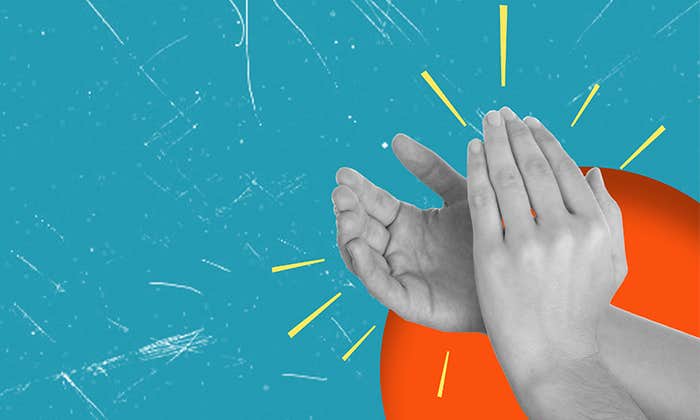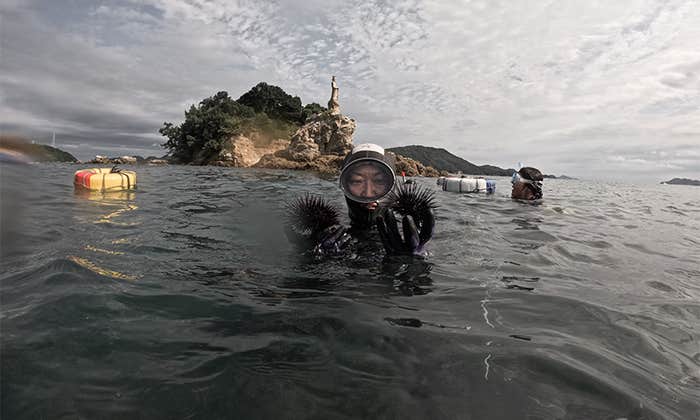Xu Jiao was anxious to get back in the gym. Living in Chengdu, the capital of China’s Sichuan province, she had gone through two months of lockdown. The pandemic hadn’t been particularly bad in the city. To date there have been 144 confirmed cases and three deaths, according to official statistics. Still, as with much of China, the lockdown had been severe. Almost everything had been closed and Xu Jiao, in her mid-30s, had to show a pass at the gates of her residential community every time she wanted to leave her apartment building. She would have her temperature checked upon leaving and returning, which would be logged by the security guards.
China is sometimes said to offer a glimpse of the West’s post-lockdown future. Xu Jiao’s life is now back to normal. A committed athlete, she works out every morning for a few hours at her local gym. While the rest of the economy in Chengdu had slowly started to open back up in the first weeks of March, it was only in mid-April that gyms were allowed to start again. But there are differences. The staff at the gym all wear masks. Cleaners disinfect the equipment regularly. People have to bring their own towels. When Xu Jiao enters the gym, she said, “They usually check my Health Code, and they always take my phone number and government ID, as well as my temperature.”
Anyone showing a yellow code in public is sent home.
One of the key factors that has allowed China to start to regain a semblance of normality is the fact that the government has instigated mass-scale testing. Testing is easily available for people to determine whether they have the virus, and many employers expect to see a negative result before a person is able to return to work.
The Chinese government has teamed up with major tech companies Alibaba and Tencent to issue QR health codes that show a person’s exposure to the virus. To obtain the code, people must use one of China’s widespread apps like WeChat, submit their national ID (or passport), recent travel history, whether they’ve crossed paths with anybody with COVID-19, or suspected of having it, and answer a host of questions about their health that you might see on a doctor’s-office questionnaire. Once the information is verified, people are assigned a color code that flashes green, yellow, or red. The colors signal whether a person has tested positive for the virus and whether they may have been recently exposed and need to take themselves out of society. The app gives us a view from China that might help us understand a potential future for ourselves, as tech interventions have been touted in the West as one route out of lockdown.
In China, the QR code has profound implications for a person’s ability to move freely throughout society. Those who have a green QR code have tested negative for the virus and have not been exposed to it since their last test. They are free to live normal lives. These codes are checked at the entrance to subways, on roads, at workplaces, restaurants, cinemas, supermarkets––anywhere, effectively, that might constitute normal economic activity. If a person with a green code should come into contact with someone who tests positive for the virus, even if that contact is as tangential as sharing a subway carriage with them, the code turns yellow. The person must self-isolate for a period of seven days and get re-tested after to prove they are negative. Anyone showing a yellow code in public is sent home. Should a person have direct, close contact exposure with someone who has tested positive, then their code will turn red and they will be taken to a public quarantine facility for up to 14 days.
The QR code system is the most visible part of a widespread effort to decisively fight the virus. It has only been effective because of wide availability of reliable testing for the virus, completely different laws governing data privacy, and the ability of the government to forcibly quarantine people in public facilities (either a fangcang hospital—a converted site like a sports facility that is used as a field-hospital—or a hotel commandeered by the government).
“Why are you doing this? Isn’t this a bit much?”
The government is willing to shutter entire cities even at the start of tiny secondary outbreaks. On April 30, The Economist reported that the northern city of Harbin, with a population of 11 million, was put back under lockdown after just 63 confirmed cases of the virus were discovered. These cases were traced back to a returning Chinese student who traveled from America in March. The same is true of Shulan, a city of 600,000 people in Jilin province, which has been sent back into lockdown after a cluster of 12 cases was discovered in early May. More than 250 close contacts of those 12 have been rounded up and sent into full quarantine, while the rest of the city has been plunged back into the kind of measures that blanketed China from the end of January.
China, it seems, is attempting to keep the virus entirely at bay. The aim is to have as close to no spread as possible in the entire country. On May 2, the government announced that there was only a single new case of the disease uncovered in a population of 1.4 billion, and it was imported from abroad. Despite this effort, clusters like the ones discovered in Harbin and in Shulan are still cropping up, underscoring the difficulty of this endeavor. Wuhan, where the initial outbreak occurred, reported five new cases on May 10. This is the highest number of infections in the city since March 11.
The Chinese government is taking a big gamble. China believes that strongly containing the virus in the short term, despite the economic fallout, is more important for the economic health of the country in the long term. The government is worried both about the potential of seeing overwhelmed hospitals again, as was seen in Wuhan, and also that consumer confidence would be severely harmed if there was any risk of infection in the wider society. The side effect of this policy has been that there is a decent level of social trust that the virus is not a pressing risk to the average person in their daily life. “With the QR codes, widespread testing, and constant temperature checks wherever you go, people are confident that those around them have passed a certain threshold of safety,” said Zak Dychtwald, author of Young China: How the Restless Generation Will Change Their Country and the World.
In cities like Chengdu, where the virus had less impact, restrictions such as the use of the QR code are being gradually relaxed, though it is down to specific companies’ discretion. Recording people’s contact details and temperatures, however, seems to be fairly universal and has obvious benefits: It could help trace an outbreak back to a gym goer. Most department stores and office buildings still check the QR codes, as do public transport stations, meaning that by the time someone will have arrived in the gym it is likely they will have been checked somewhere en route.
Nicole Zuo, in her early 30s, a yoga instructor in Shanghai, was also one of the last of her friends to go back to work. “When we finally reopened there were many rules,” she said. “We spaced all the mats out so that there was well over a meter of space in any direction, and we also made every person who came to practice wear a mask.” In a room that would usually hold 40 people, they would only allow 10. But Zuo said that they are now basically back to where they were before the virus had started, though they do still require temperature checks and contact-tracing information to be recorded at the door.
That people feel fairly confident the virus has ceased to spread in their communities is enabling them to go out again. This doesn’t mean that the economy is back to where it was before. “Compared to last year, we are down 70 percent in terms of income,” said Jiang Yi, the founder and owner of a successful chain of crawfish restaurants in Chengdu. “It’s not just the risk of infection. You have to understand that many people’s incomes have taken a massive hit.”
According to government statistics, the unemployment rate in China for March was 5.9 percent. This is slightly down from 6.2 percent the month before, but would still put it at close to the highest rate in over a decade. It would imply that in the general population over 27 million were out of work. But the official statistics don’t include the informal economy or migrant laborers, who, while a smaller percentage than in less developed economies like India, are still a significant proportion of the overall economy. Zhang Bin, an economist at the Chinese Academy of Social Sciences, a government think tank, suggests instead that if those factors were considered there are more likely to be 80 million people currently unemployed.1
The idea of immunity passports is fraught with ethical concerns.
This shows the difficulty of the road ahead for Western governments who are now starting to open their economies. Many of the measures employed in China are unthinkable in Western democracies, such as forcible government quarantine or the kind of intense surveillance embedded in the health code. The New York Times, for example, discovered sections of code in the app that suggest that data is directly shared with the police.
Health data and personal information have also been leaked, with people who had traveled Wuhan and Hubei province––the original epicentre of the virus––being doxxed upon arriving in their hometowns in other parts of the country. This led to claims of harassment as people complained that even their government issued ID card numbers had been leaked. Shared screenshots of an exchange between a group of concerned villagers in Jiangxi province on WeChat show locals sharing data the government had compiled of everyone who had traveled from affected areas in the last month. “Why are you doing this? Isn’t this a bit much?” one of the people who had traveled from Wuhan asked. “These are special times; how can you expect privacy?” someone responded.
Even putting aside the risks of information leaking, some citizens have balked at the requirements. “It worked well at the beginning,” said He Yujia, a literary translator in Chongqing, “but now I’m not comfortable with an app that has all my health data, medical records, location history and more all siphoning my information. And it is completely legal.” Every time she leaves her apartment building she has to show the code at the gates, and again upon her return. “It is scary to think you are monitored at every step.”
Tech interventions have been touted in the West as one route out of lockdown. The Ada Lovelace institute, a London-based research firm, focused on data and society, issued a report in April called “Exit Through the App Store.” It detailed some of the measures that might be employed by tech companies in the West, which have created devices that echo China’s QR codes.
Each of these have been fraught with controversy where they have been used. In Germany, notorious for its general ambivalence toward technology, there was an early push by the government to investigate the potential for app-based solutions to help ease lockdowns. Despite initial government sponsored hackathons, the plans have been mired in controversy over data protection and the risk of surveillance.2 According to data compiled by ZDF, a German broadcaster, 42 percent of Germans would not be willing to install any kind of social tracing application on their phone.
“I’m not comfortable with an app that has all my health data.”
Immunity passports have also been widely discussed. Immunity passports are based on serology tests, designed to spot the existence of antibodies in the blood, and would imply that a person has had the virus and subsequently recovered. This would be true even if they had been asymptomatic. In Venetao, one of the hardest hit regions of Italy, healthcare workers are being tested for antibodies to see if they can return to the front-lines. In Chile, citizens who have recovered from the virus are being issued with immunity passports. Similar schemes have been debated in Germany, Italy, and the U.S. The battered aviation industry is also keen to start exploring the idea. The CEO of Delta brought up immunity passports in his quarterly earnings call. Emirates airline has already piloted on-site antibody tests in Dubai International Airport.
But the idea of immunity passports is fraught with ethical concerns. The World Health Organization recently issued a commentary arguing against instituting immunity certificates, stating “at this point in the pandemic, there is not enough evidence about the effectiveness of antibody-mediated immunity to guarantee the accuracy of an ‘immunity passport’ or ‘risk-free certificate.’” The potential risks of black markets, false-positive test results, and of misaligned incentives being created to encourage people to self-infect are issues that would have to be addressed should such a policy be pursued.
General discussion of antibody testing implies that the West has failed to contain the virus. Immunity passports make the tacit assumption that many have been or will be exposed to the virus, and their bodies’ natural defenses are their ticket through society. As economies in the West slowly creak back into action, that leaves average citizens an awkward choice. With no way of knowing who around them may or may not have the virus, they have to make internal calculations about their own risk and moderate their behavior accordingly.
Xu Jiao doesn’t feel that pressure. She said she is not worried that people around her might be carrying the virus. The gym has been a big help to her. Her father has been battling cancer for the past year and she lives at home with him. She isn’t overly concerned about catching the virus and bringing it back to him. Going and working out in the mornings helps to keep her mind off his struggles.
Barclay Bram is a Ph.D candidate in Oxford University’s School of Overseas and Global Areas Studies. His previous article for Nautilus was “WeChat Is Watching.”
References
1 He, L. & Gan, N. 80 million Chinese may already be out of work. 9 millions more will soon be competing for jobs, too. Edition.cnn.com (2020).
2 Barker, T. Germany’s angst is killing its coronavirus tracing app. ForeignPolicy.com (2020).
Lead image: FeatureChina via AP Images


























